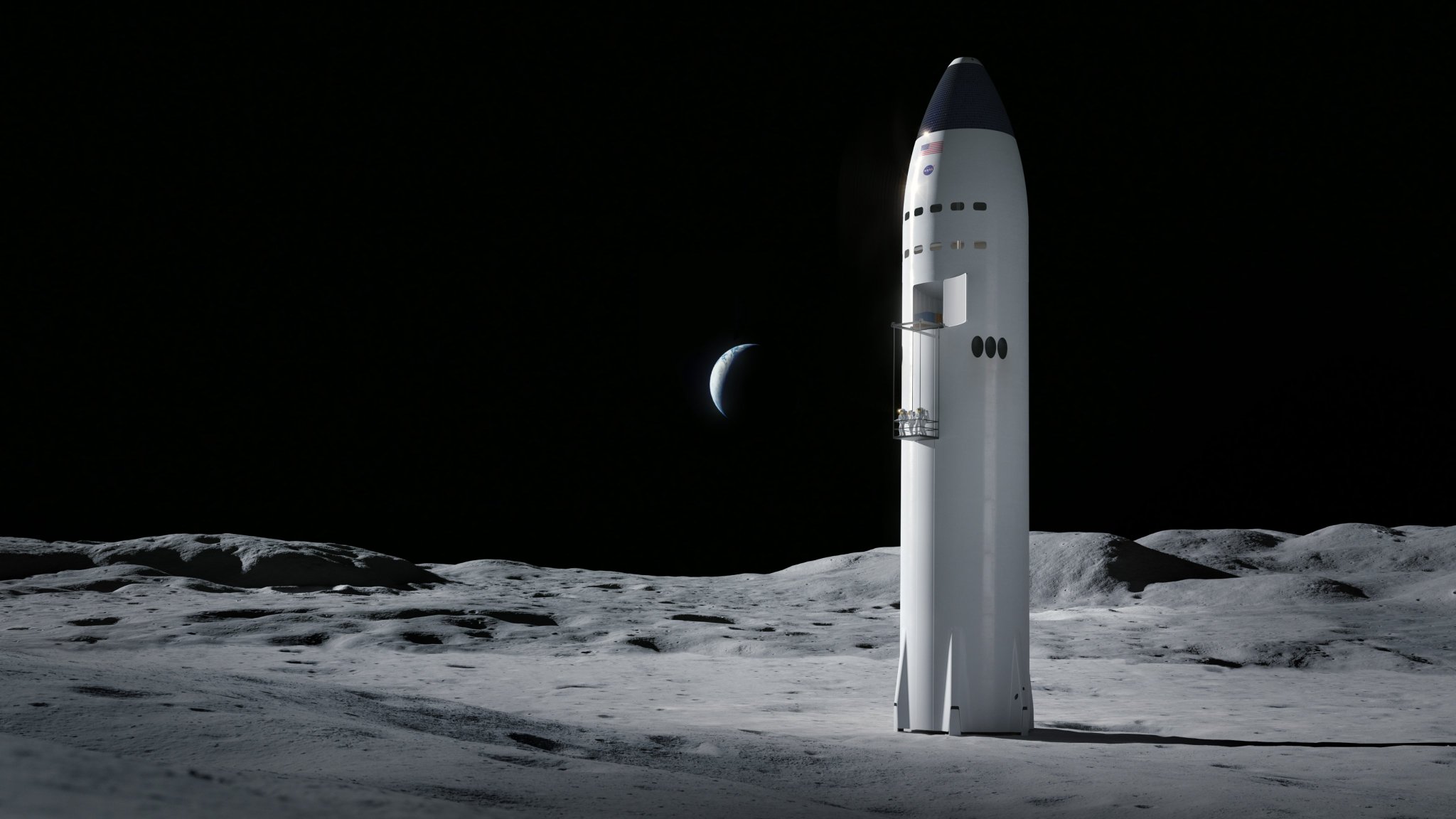SpaceX, Blue Origin and Dynetics will build human lunar landers for NASA’s next trip back to the Moon
NASA has selected the companies that will provide them with the human landing system for their Artemis Moon missions, including a lander vehicle which will carry astronauts from space to the lunar surface for the first time since 1972. Blue Origin, SpaceX and Dynetics were picked from a larger field of competitors to develop and build human landing systems (HLS) to carry the first woman and the next man to the Moon, a goal which NASA still hopes to accomplish by 2024.
SpaceX's Starship was selected as a lander that will launch using the SpaceX Super Heavy rocket. Starship is the spacecraft that SpaceX currently has in development, which is designed as a fully reusable spacecraft for missions to orbit, to the Moon and to Mars . Super Heavy is also currently in development, and will act as a fully reusable booster that's capable of propelling the large mass of Starship to orbit with a full payload. Starship as a lander choice is an interesting one, because it's a very different model and design from landers that have made the trip previously.
NASA says that the Starship selection can help its long-erm goals because of its flexible design, enabling it to provide fuel transfer in Earth orbit for the longer trip transporting crew, including from Orion or the Gateway Moon-orbital station to the lunar surface. SpaceX's proposal included providing a demonstration of in-space propellant transfer between vehicles, as well as an uncrewed test landing on the Moon.

SpaceX human-rated Starship concept.
Blue Origin's Blue Moon is more traditionally designed, as far as dedicated landers go, and involves a multipart descent and ascent system that's less integrated than Starship. At last year's International Astronautical Congress, Jeff Bezos presented a more detailed look at Blue Origin's bid for the job, along with his partners and what roles they'll play. That national team" sees Lockheed Martin building the ascent element' part of the launch system, which will provide liftoff for their HLS, while Northrop Grumman will provide the system for transferring the lander craft from the launch vehicle to its descent position, and then Blue Origin is building the lander and the descent system for actually bringing it down to the Moon's surface. Draper is providing avionics and descent guidance. Blue Moon will be able to be launched on both Blue Origin's New Glenn rocket, and ULA's Vulcan.

Blue Origin's Blue Moon lander concept.
Dynetics, which is a subsidiary of Leidos (formerly SAIC) has a long history of demonstrated expertise in space and defence, and was originally founded in 1969. It'll be developing its Dynetics Human Landing System which includes one lander with agent and descent capabilities, and it'll be carried aboard the ULA Vulcan launch system on its trip to the Moon. Dynetics is working with a number of subcontractors on its system, including Sierra Nevada Corp.

The Dynetics Human Landing System concept design.
The full list of companies vying for this contract included Blue Origin, with Jeff Bezos' company taking the lead for its collaborative industry-spanning team; Boeing, which is one of NASA's providers for its Commercial Crew program; SpaceX, which developed the other vehicle for Commercial Crew, and is targeting its first crewed flight for late May; and other smaller companies including Sierra Nevada Corportation, which has been developing a reusable space plane for use in various missions including space station resupply, and Dynetics, which was a surprise winner in the race.
The award here reflects NASA's stated goal to have at least two systems in parallel development from multiple providers, which offers redundancy in case of any major setbacks, and which also means that the agency will theoretically have at least two human landing systems to choose from going forward. The purpose of Artemis is to not only return humans to the lunar surface, but help NASA establish a permanent deep space presence for human exploration, including to Mars and potentially beyond.